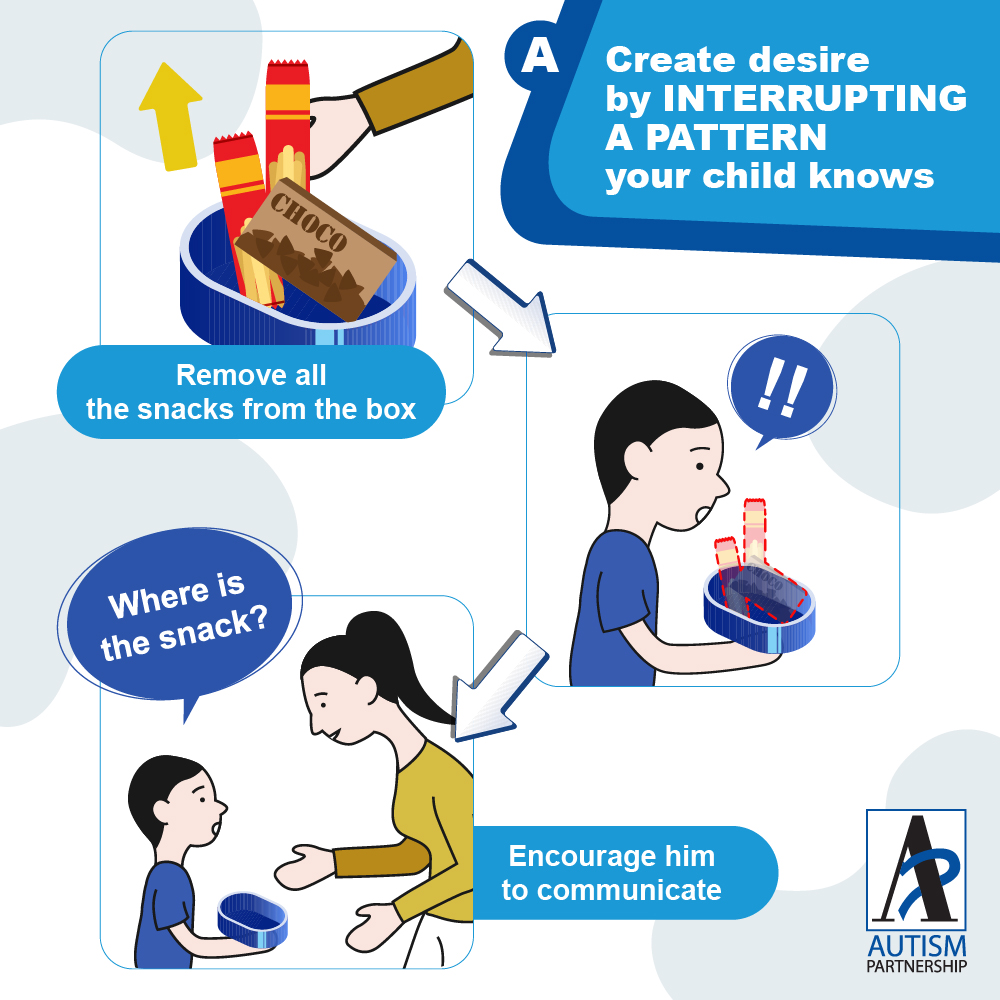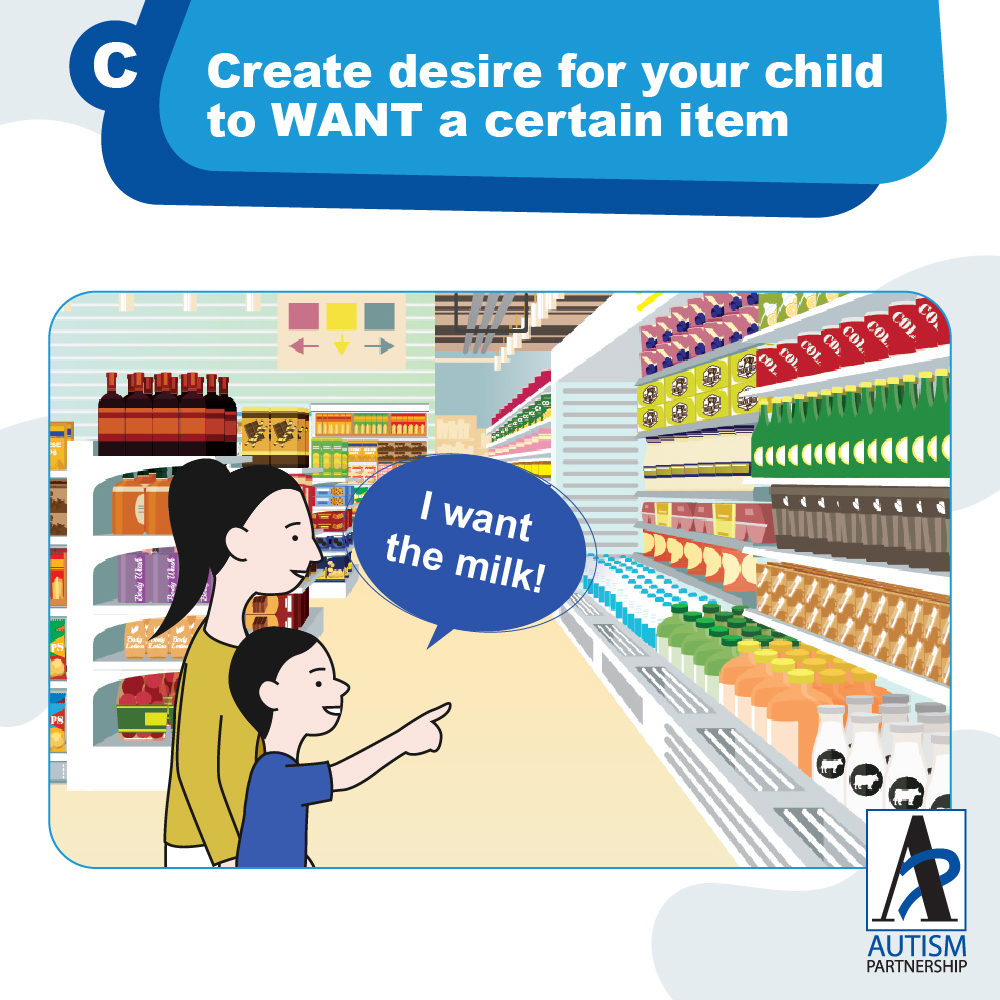
Why do we have the desire to speak with others? That is because we have the motivation and we know there is a need to communicate with others.
However, children with autism may not have the desire to communicate or share therefore making ‘spontaneous communication and the use of ‘spontaneous language’ difficult for them. For this reason, we have to create the desire and “temptation” for them to speak, and this is what we call Communication Temptation.
In Part 1, we provided an Introduction to Spontaneous Communication and what Communication Temptation is. This article will explore ways to help your child to communicate spontaneously using Communication Temptation techniques.
First, let’s help them by creating the need for them to talk. This guide will explore three ways to create these desires.

One way is to build and find a pattern that the child knows, and then interrupt or break it. Imagine eating ice cream and it is melting. You go to your usual tissue box and you realize instead of having tissue in it, you see trash piling in the box! Because the need for a piece of tissue is so strong, you would probably ask where the box is or ask someone to get one for you.
For our children, we also need to disrupt what they’ve always expected, and that’s when there is a need for them to communicate. For example, your child knows that there are snacks in the snack box. What we can do is to remove all the snacks from the box – either we leave it empty, or we put something else inside. Now, it is tea-time and your child wants to have a snack. When your child opens his snack box… he realizes that there is no snack inside! As he wants to have a snack, what do you think he will do? We can encourage him to communicate and let us know that “The snack box is empty!” or “I want (a) snack!” or even “Where is the snack?”. As your child attempts to communicate, we can reinforce his communication by honoring his request, and giving him his preferred snack.

Another way is to let your child have a short ‘taster’ of his preferred toys and then withhold it.
Let’s say you are enjoying a slice of cake and suddenly someone comes and takes away your cake. What would you do? Would you let the person be or would you approach the person and ask what’s going on? Most of us would probably ask to have the cake back!
Similarly for our children, we also need to withhold something that they like so that there is a need for them to communicate. As your child wants to get his toys back, we can then encourage him to say “I want the toy” or “Can I have it back?”. Communicating this way helps to reduce our children’s frustration especially when their toys are being snatched by someone else.

We can also create the desire for your child to want a certain item.
When we are out at a mall, we see signs like ‘SALES!’ or ‘NEW ITEM IN STORE’. Or when we are reading an article and you see a page titled, ‘YOU WON’T BELIEVE WHAT THIS CAN DO!’ These signs and titles serve to tempt us to purchase something from them or to check out that page.
As for our children, we have to create these tempting situations for them to want these items or to participate in these situations. For the child to gain access to these tempting items, they will have to communicate to express his or her desire, “I want the xxx” or “Let me check it out” as examples. This helps them express their desire, potentially encouraging curiosity and developing more confidence as they communicate.
As mentioned, children with autism do not have the desire or motivation to communicate. By creating the desire for your child to communicate using ‘Communication Temptation’, you will create opportunities for your child to initiate communication, help them express their needs more effectively, and at the same time decrease their frustration.

Every little life is a special present for a family. From the time a baby is born, parents journey through lots of highs and lows, wishing for their child to grow up with a big smile, make great friends, find their own way in a job they love, and create a happy family. However, for […]

Autism Spectrum disorder can be diagnosed as early as 18 months. Research shows strong evidence on how effective Applied Behavior Analysis (ABA) can help children with Autism. It helps to deal with children’s challenging behaviors such as inattention, aggression, self-stimulation, etc. Howard, et al (2005) conducted a study to compare the effectiveness of 3 treatment […]

In today’s society where information flows freely, parents can easily receive different messages. However, these messages are often debatable or even wrong. Believing wrong information can easily lead to misguided choices and delay treatment, the consequences of which may last a lifetime. When conducting one-on-one consultations with parents, I often hear the following misguided views […]
Please share to let more people learn about ASD and ABA therapy:
AP holds the belief that with quality Autism Partnership Method (APM) treatment, individuals with autism should reach their fullest potential and achieve the greatest degree of independence and highest quality of life possible.

Sign up now to get ABA and Autism related news delivered to your inbox. Enter your email to get started
Hong Kong Center
Kowloon Center

All information received will always remain confidential. We will contact you as soon as we review your message. Thanks